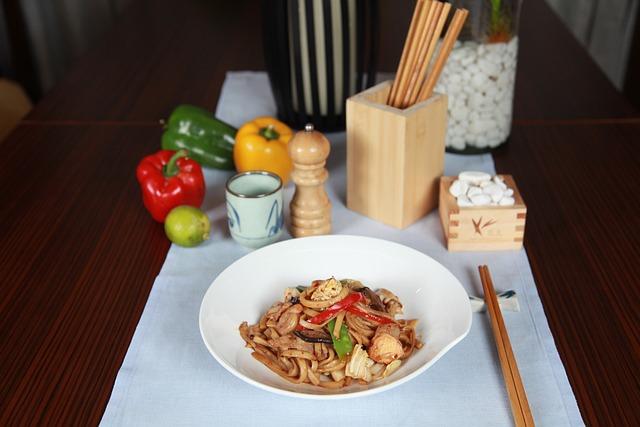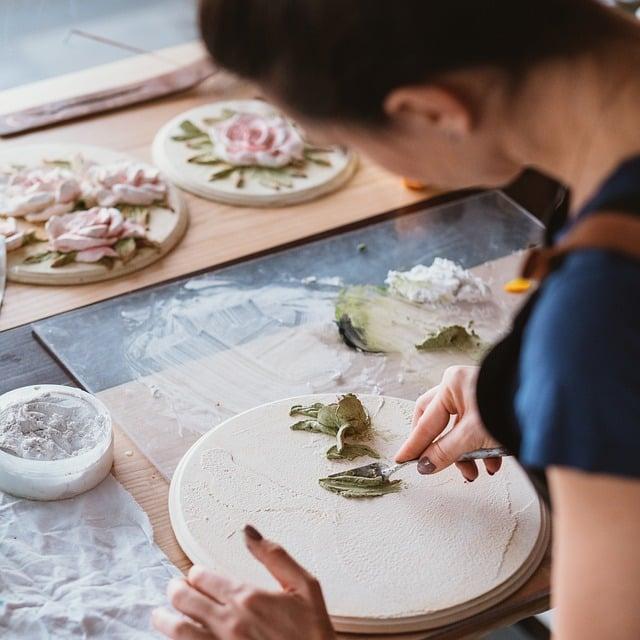In a small village in the Philippines, the air was filled with the sweet aroma of coconut and rice. Every Sunday, Lola Maria would gather her grandchildren to make “bibingka,” a traditional rice cake. They would mix glutinous rice flour with coconut milk, then pour the batter into banana leaf-lined molds. As the cakes baked over hot coals, the children would dance around, their laughter mingling with the crackling fire. When the bibingka was ready, they topped it with butter and grated cheese, savoring each bite—a delicious reminder of their heritage and the love that binds them.
Table of Contents
- Exploring the Rich Heritage of Filipino Desserts
- A Journey Through Iconic Flavors and Textures
- Must-Try Traditional Sweets for Every Occasion
- Crafting Authentic Filipino Desserts at Home
- Q&A

Exploring the Rich Heritage of Filipino Desserts
Filipino desserts are a delightful tapestry of flavors and textures, deeply rooted in the country’s rich cultural heritage. Each region boasts its own specialties, often influenced by local ingredients and traditions. From the sweet, sticky rice cakes to the creamy, coconut-infused treats, these desserts reflect the warmth and hospitality of the Filipino people. Some of the most beloved traditional sweets include:
- Leche Flan – A rich caramel custard that melts in your mouth.
- Halo-Halo – A colorful mix of shaved ice, sweet beans, fruits, and topped with leche flan and ube ice cream.
- Bibingka – A rice cake traditionally cooked in clay pots, often enjoyed during the Christmas season.
- Puto – Steamed rice cakes that are soft and fluffy, often served with savory dishes.
- Kakanin – A general term for various rice-based delicacies, showcasing the versatility of rice in Filipino cuisine.
These desserts not only satisfy the sweet tooth but also tell stories of the past, celebrating the fusion of indigenous ingredients and colonial influences. The use of **coconut**, **rice**, and **tropical fruits** highlights the abundance of natural resources in the Philippines, while the intricate preparation methods showcase the artistry and dedication of Filipino cooks. Whether enjoyed during festive occasions or as everyday treats, these desserts are a testament to the country’s vibrant culinary landscape, inviting everyone to indulge in a slice of Filipino culture.

A Journey Through Iconic Flavors and Textures
Exploring traditional Filipino desserts is akin to embarking on a vibrant culinary adventure, where each bite tells a story steeped in culture and history. The **richness of coconut**, the **sweetness of ripe fruits**, and the **earthiness of rice** come together to create a symphony of flavors that dance on the palate. From the creamy, custard-like texture of **Leche Flan** to the chewy delight of **Biko**, a rice cake made with sticky rice and coconut milk, these desserts showcase the Philippines’ diverse agricultural bounty. Each dish is often adorned with local ingredients, such as **mangoes**, **bananas**, and **ube**, which not only enhance the taste but also reflect the vibrant colors of Filipino culture.
The textures found in these desserts are just as captivating as their flavors. The **smoothness of Maja Blanca**, a coconut pudding, contrasts beautifully with the **crunch of toasted coconut flakes** sprinkled on top. Meanwhile, the **flaky layers of Turon**, a banana spring roll, provide a satisfying crunch that complements the soft, sweet filling inside. Other favorites like **Halo-Halo** present a delightful medley of textures, combining crushed ice, sweet beans, jellies, and fruits, all topped with a scoop of ice cream. This intricate layering of flavors and textures not only satisfies the taste buds but also creates a sensory experience that is uniquely Filipino, inviting everyone to indulge in the country’s rich culinary heritage.

Must-Try Traditional Sweets for Every Occasion
When it comes to celebrating life’s special moments, traditional Filipino sweets are a must-have. These delightful treats not only satisfy the sweet tooth but also carry rich cultural significance. **Leche Flan**, a creamy caramel custard, is often served during birthdays and holidays, symbolizing abundance and joy. Another favorite is **Bibingka**, a rice cake traditionally enjoyed during the Christmas season, often topped with salted eggs and cheese, evoking the warmth of family gatherings. **Puto**, a steamed rice cake, is versatile enough to be served at any occasion, from birthdays to fiestas, and is often paired with savory dishes.
For those with a penchant for chewy textures, **Kutsinta** is a must-try. This brown rice cake, often served with grated coconut, is a staple during celebrations and is loved for its unique flavor. **Turon**, a sweet banana spring roll, is perfect for snack time or as a dessert at any gathering, bringing a delightful crunch to the table. Lastly, **Halo-Halo**, a colorful mix of shaved ice, sweet beans, fruits, and leche flan, is the ultimate summer treat, embodying the spirit of Filipino festivities. Each of these sweets tells a story, making them essential for any celebration.

Crafting Authentic Filipino Desserts at Home
Exploring the world of traditional Filipino desserts is like embarking on a sweet journey through the archipelago’s rich culture and history. Each dessert tells a story, often rooted in local ingredients and regional customs. **Leche flan**, a creamy caramel custard, is a staple at celebrations, while **bibingka**, a rice cake traditionally cooked in clay pots, evokes the warmth of Christmas festivities. Other beloved treats include **puto**, steamed rice cakes that come in various flavors, and **kakanin**, a collective term for rice-based delicacies that showcase the versatility of glutinous rice and coconut. These desserts not only satisfy the sweet tooth but also connect generations through shared recipes and cherished memories.
Crafting these authentic desserts at home allows you to experience the joy of Filipino culinary traditions firsthand. Start with **ube halaya**, a vibrant purple yam jam that serves as a versatile base for many desserts, or try your hand at making **mango float**, a no-bake cake that layers ripe mangoes with cream and graham crackers. For those seeking a challenge, **suman**, a sticky rice delicacy wrapped in banana leaves, offers a delightful hands-on experience. As you experiment with these recipes, you’ll discover the importance of community and family in Filipino culture, where sharing food is a way of expressing love and hospitality.
Q&A
-
What are some popular traditional Filipino desserts?
- Leche Flan – A rich caramel custard made from eggs and condensed milk.
- Halo-Halo – A refreshing mix of crushed ice, sweet beans, fruits, and topped with leche flan or ice cream.
- Bibingka – A rice cake traditionally made with rice flour, coconut milk, and baked in banana leaves.
- Puto – Steamed rice cakes that are often served as a side dish or dessert.
-
What ingredients are commonly used in Filipino desserts?
- Rice flour – A staple in many desserts like bibingka and puto.
- Coconut milk – Adds richness and flavor to various sweets.
- Condensed milk – Often used for sweetness and creaminess in desserts like leche flan.
- Fruits – Such as mangoes, bananas, and jackfruit, are frequently incorporated for natural sweetness.
-
Are traditional Filipino desserts typically served on special occasions?
- Yes, many traditional Filipino desserts are served during celebrations, holidays, and family gatherings.
- They often play a significant role in festivities like Christmas, birthdays, and weddings.
-
How do traditional Filipino desserts reflect the culture?
- They showcase the use of local ingredients and flavors unique to the Philippines.
- Many desserts have historical significance and are passed down through generations.
- They often symbolize hospitality and community, as sharing food is a vital part of Filipino culture.
In the vibrant tapestry of Filipino culture, traditional desserts are more than just sweet treats; they are a celebration of heritage and community. As you explore these delightful confections, may you savor not only their flavors but also the stories they tell.

大家好,我是彼得潘,專業的手法身體治療師。我喜歡探索和研究各種主題,並透過與人工智慧的合作分享專業、實用、有趣的文章。我們定期進行人工審核,以確保內容的準確性。如果您發現文章中有任何不準確的地方,請隨時與我們聯繫,我們會及時糾正。您可以透過 [email protected] 與我們聯繫。



